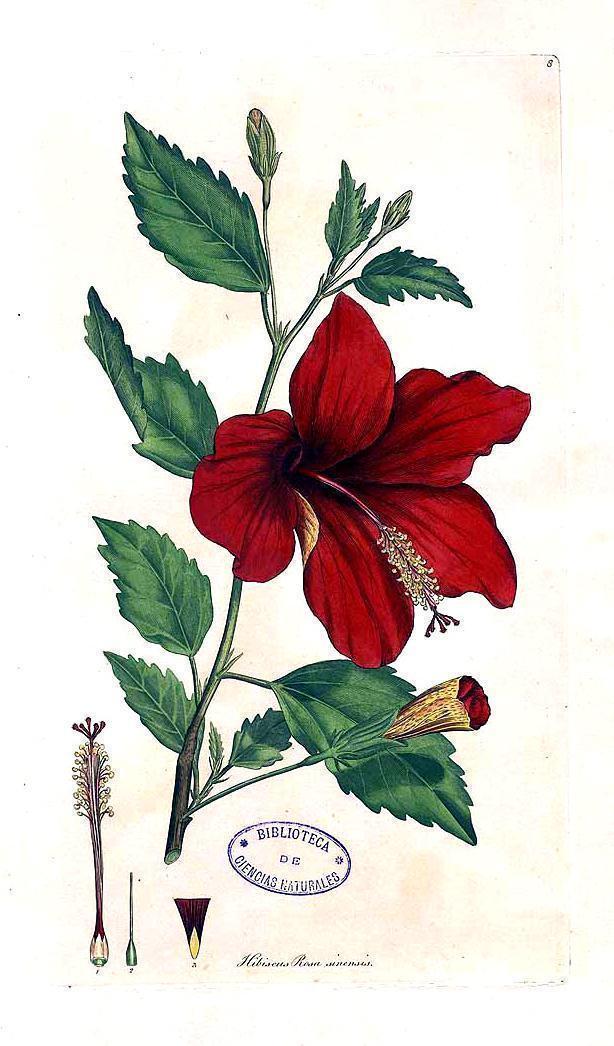Hibiscus rosa-sinensis L.
MalvaceaeEl nombre del género deriva del nombre griego, 'ebisckos' e 'ibiskus', usado por Dioscórides para describir una especie de malva. Como planta medicinal es conocida desde la antigüedad, teniéndose constancia desde 1216, año en que el botánico sevillano Abul-Abbas-el-Nebate la describió resaltando como se utilizaba su fruto inmaduro por los egipcios, los cuales lo mezclaban con la carne. Su uso es muy popular actualmente en la parte Oriental del Mediterráneo. También es considerada una flor de galanteo en Oriente y el Pacífico. En Japón, por ejemplo, significa gentileza y bienvenida. Los chinos por su parte la identifican con la fama y la riqueza, también con las vírgenes. En Tahití, cuando una mujer lleva una flor de la variedad hibisco detrás de la oreja izquierda significa que está disponible para casarse, mientras que si la lleva tras la oreja derecha quiere decir que ya está comprometida; una flor detrás de cada oreja es que le ha sido propuesto matrimonio y que ella preferiría que no hubiera sido así. Sus enormes flores hacen que esta planta sea muy utilizada en jardinería como seto y en la decoración de patios, siendo una planta que precisa mucho sol, sobre todo para la floración.
Procedencia
Oriental/AsiáticoCalendario
Hábitat
Morfología
 Arbusto
Arbusto
 Cónica
Cónica
 Simple
Simple
 Ovada
Ovada
 Triangular
Triangular
 Alterna
Alterna
 Doble Serrado
Doble Serrado
 Dentado
Dentado
 Serrado
Serrado
 Cuneada
Cuneada
 Agudo
Agudo
 Perenne
Perenne
